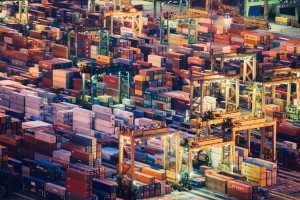Automation is a process spreading to all industrial sectors with different approaches that can sometimes be reused. This is the scenario being faced by the container terminal sector, which considers that the automotive industry has a feasible model that could be applied to automation of its own vehicles. This automation will significantly increase safety and control levels throughout the entire logistical process.
In the logistics field, development of smart machinery has taken an incredible leap. But this technological progress is hampered by the limited number of tools on the market. Seeking support to drive sales of self-driving cars could greatly accelerate this transformation.
Automation without reinventing the wheel
The automobile industry is experiencing an age of innovation. One of its main battlefields is development of self-driving vehicles, a technology that heralds a future with safer roads. In just a few short years, this field has experienced exponential growth and bears very promising results.
Nevertheless, it is still in experimental stages, and it is too soon to offer autonomy without the sporadic intervention of someone travelling in the driver’s seat. This being the case, there are still many rough edges to be smoothed until private self-driving cars become a reality on our roads and at car dealerships.
In the meantime, bulk handling solutions manufacturer Kalmar has explained how these technological developments could be applied to container terminals. Instead of having to design a new technology from scratch or using extremely expensive components, part of these automobile solutions could be adapted and reused for specialised industrial solutions in a port setting.
Different models with shared synergies
The basic technology for self-driving cars is already here, so the greatest challenge for engineers and manufacturers is operational safety in an open, changing environment. This means variables such as traffic regulation, each different country’s regulations, weather conditions or the quality and condition of roads. At least for the time being, decision-making is centralized in only one vehicle. In other words, each vehicle is controlled from inside the unit itself, which is feasible for passenger vehicles.
When comparing this reality with container terminals, certain points are shared, while others are not. To begin with, automated container terminals have been used safely for two decades. Since operations are conducted in a much more closed, controlled environment, it is simpler to install a specialized infrastructure.
In this case, decision-making can be centralized at different points outside the car itself, since navigated car would have no pilot. These points could be the central terminal software or a machine control room.
It should be noted that container terminals are moving towards a completely automated system, although this bears certain limits: in the near future, remote-controlled or radio-controlled operations will still be necessary.
The future of automation: AI and digitization
Artificial Intelligence is currently the most promising field for automated driving. It is hoped that improving these systems and making them more available both in vehicles and in the cloud will also open up new options for smart solutions at container terminals.
On the other hand, it is estimated that automation that can be extrapolated from one sector to another will lead to a transparent, digitized logistical chain, a sought-after objective of the transport industry. The main challenge lies inn learning to adapt and personalize these developments, which were designed for the end user, to a port environment.
In sum, the technological models for self-driving cars and for port terminals have singular characteristics, but they also have shared points that can be reused. The rapid development of an automation model for a mass market is an opportunity for industrial automation system suppliers and, along with them, for application in container terminals, as well.


